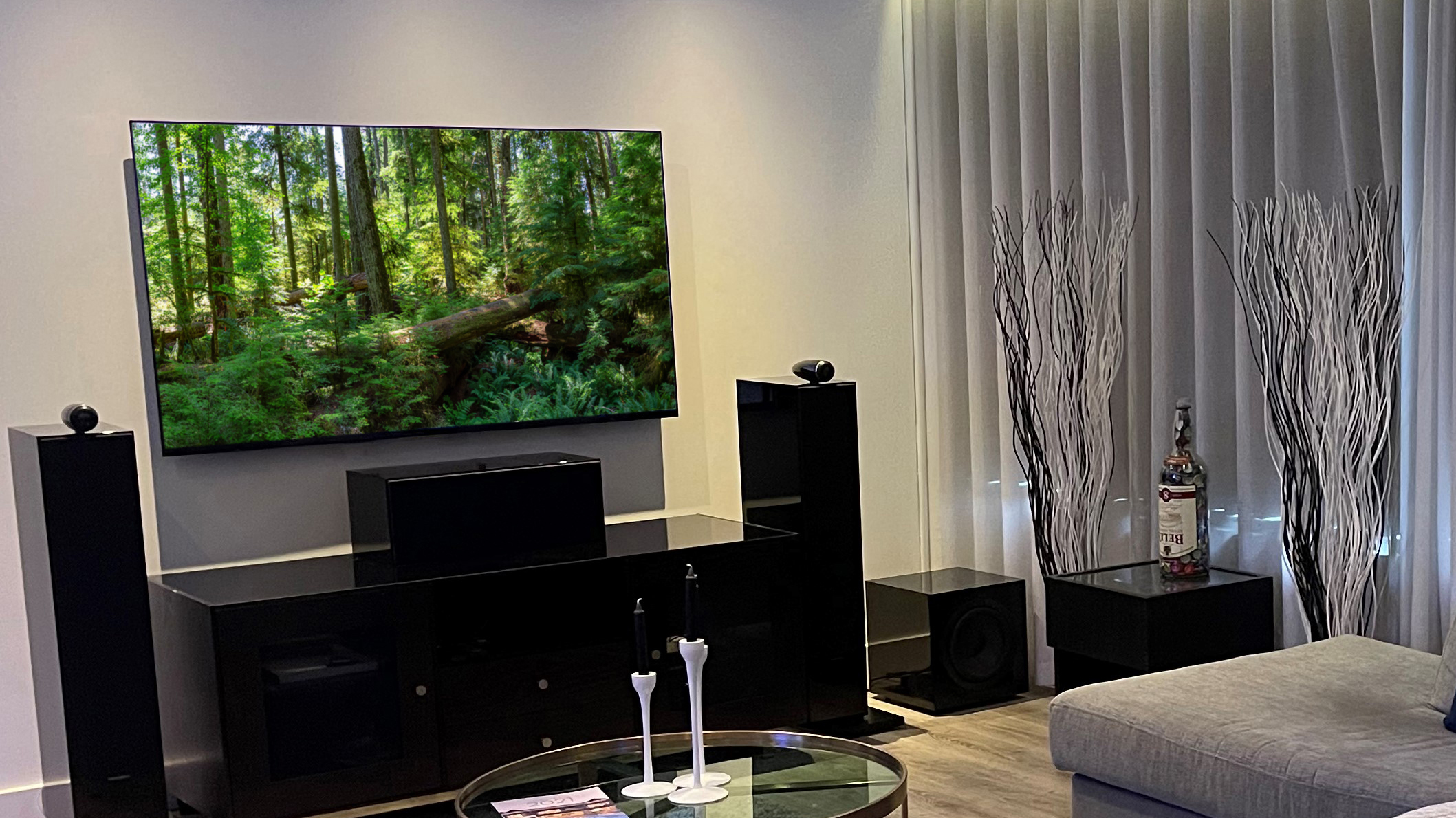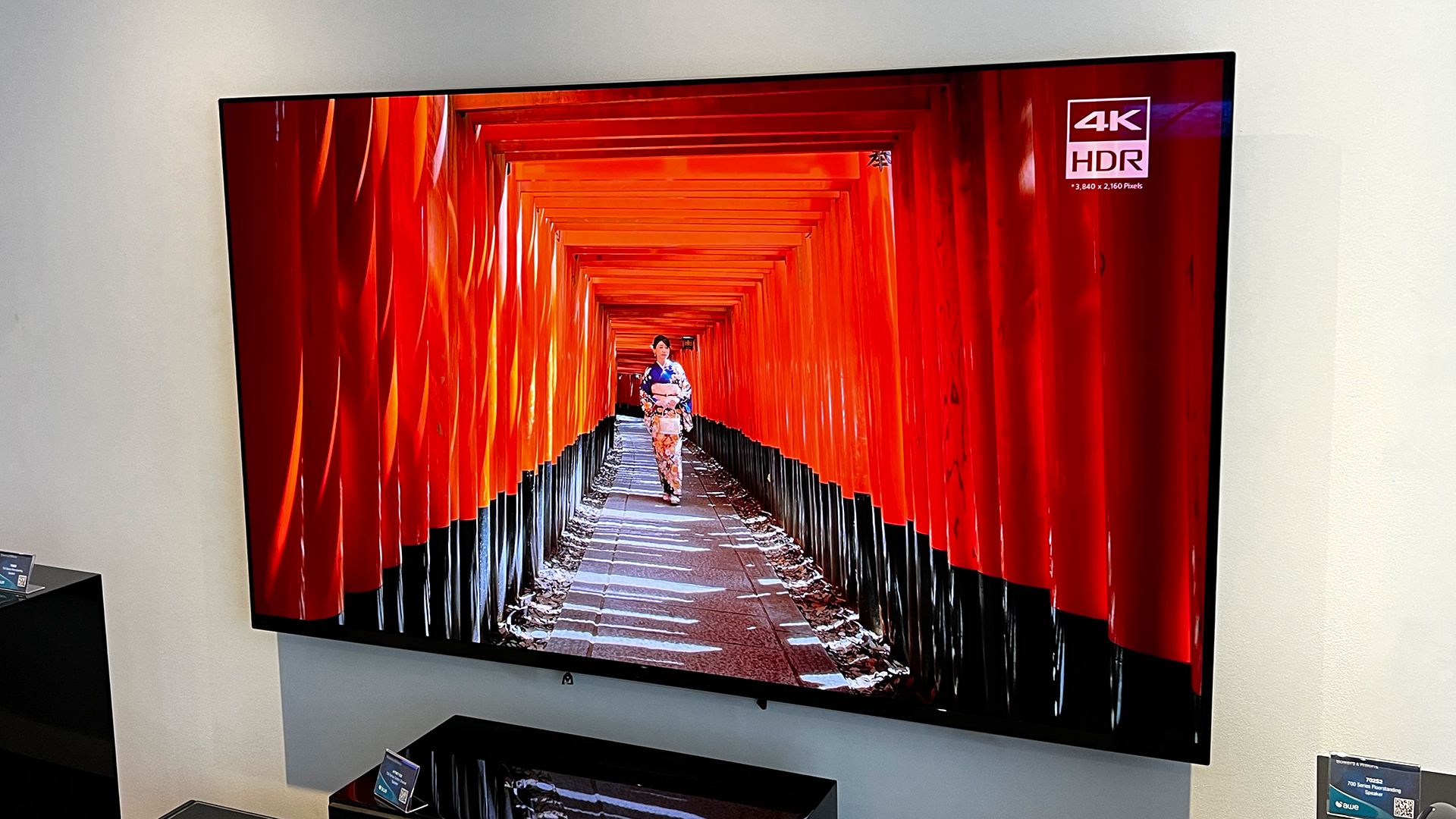

The Sony A95K is one of the most exciting TVs of 2022, because it's one of the first to use a QD-OLED screen. This is a next-gen version of OLED that mixes the self-lighting pixels with the Quantum Dot technology used by QLED TVs.
There's been lots of talk about the potential of QD-OLED to put the best OLED TVs to shame, but a lot of previews have been from technical demos rather than actual TVs. The big advantages being touted for QD-OLED are potentially higher brightness levels and a wider colour gamut, which suggests that you can expect a super-vibrant TV.
Well, I got to finally take a look at a real Sony A95K TV in the flesh – thanks to AWE Europe, distributor for custom TV, home cinema and smart home installations – and it surprised me, because I didn't get the super-punchy colours and clear jump in brightness I might have expected based on the blurb during my demo time.
Watching a mix of nature scenes and people walking around sunny environment, what I noticed was less that colours felt bigger and bolder, but rather that they felt more realistic. Looking at water and trees, I felt like I was seeing a more true-to-life depiction of all the nuance these things bring – of the nearly infinite colours gradations you expect from ripples across a lake, or from the canopy of a forest.
It's a very subtle difference, to be sure, but when mixed with the advanced darkness control of OLED, plus the excellent 4K detail, it felt like I was just getting an extra level of texture to things.

The Sony A95K's colours looked like an upgrade in nuance and realism over other TVs, but didn't show a big transformation.
When it comes to the brightness side, I just didn't have much of an epiphany there – I simply didn't see any major transformation over more mid-range OLED TVs in my initial time.
The suggestion from Samsung Display (which makes the QD-OLED panels) is that we're looking at around 1,000 nits of peak brightness in HDR in a 10% window on the screen, and 1,500 nits in a 3% window.
Get all the latest news, reviews, deals and buying guides on gorgeous tech, home and active products from the T3 experts
However, it's worth noting that in our LG G2 review, we noted that it can hit around 950 nits in a 10% window, so a regular OLED screen is already incredibly close to QD-OLED in that regard. The LG has no chance of getting close to that 1,500 nits in a smaller window, but we only that the QD-OLED can get that close in theory – we'll only find out if it can in practice once we give TVs that use it a proper test.
It's also worth noting here that the fullscreen brightness of QD-OLED screens, including this Sony, is only claimed to hit around 200 nits. And that's very similar to what the likes of the LG G2 already reach fullscreen. (We have a full LG G2 vs Sony A95K guide, if you want more on how these two top OLEDs compare.)
Together, these brightness may explain why I wasn't seeing much of a dazzling HDR upgrade from the new panel – in a lot of cases, it's not majorly different to what high-end OLED achieves now.
During most of technical explanations of QD-OLED vs OLED, including from us, people focus on where QD-OLED makes the biggest departures in performance from OLED. It has the potential to wow with stunning colours, and to hit an HDR range like nothing we've quite seen… but these are mostly likely to be visible in extremes.
It may be that owning a QD-OLED TV is like owning a high-performance car as your daily driver. When you're on pretty typical roads, you can't make the most of it – you're stopping at lights and junctions all the time, and following the same speed limits as everyone else. Similarly, when watching a lot of typical footage, it may be that QD-OLED only subtly improves over existing OLED TVs.
But we know the reason to own a high-performance car is for when you get to open it up. And I didn't get to open the Sony A95K up in my time with it – so we'll see what this thing can really do in our full review. But I'm glad I got to set some more realistic expectations in the meantime.

Matt is T3's former AV and Smart Home Editor (UK), master of all things audiovisual, overseeing our TV, speakers and headphones coverage. He also covered smart home products and large appliances, as well as our toys and games articles. He's can explain both what Dolby Vision IQ is and why the Lego you're building doesn't fit together the way the instructions say, so is truly invaluable. Matt has worked for tech publications for over 10 years, in print and online, including running T3's print magazine and launching its most recent redesign. He's also contributed to a huge number of tech and gaming titles over the years. Say hello if you see him roaming the halls at CES, IFA or Toy Fair. Matt now works for our sister title TechRadar.